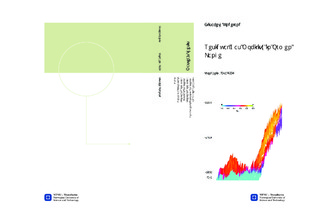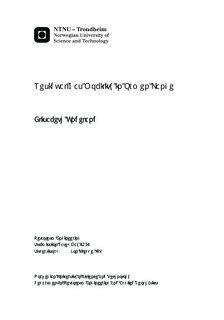| dc.description.abstract | The topic of this report is "Mobility of Residual Gas in Ormen Lange" and it has been prepared as a part of the course TPG4915 Petroleum Engineering - Reservoir Engineering, Master Thesis at the Norwegian University of Science and Technology (NTNU). The work has been performed on Ormen Lange, a natural gas field on the Norwegian continental shelf, operated by A/S Norske Shell.Substantial volumes of residual gas are present in the Ormen Lange field as a result of the hydrodynamic aquifer flow9. Total residual gas volume in 2007 is 80±30 Bcm gas depending on the residual gas saturation, Sgr. Depending on scenario 15±6 Bcm of the residual gas is recovered in 2040, and the recovery factor of residual gas is 15±5%. In general, with increasing residual gas saturation, residual gas volume increases and the recovery factor of the residual gas zones decreases.The main challenge and purpose of this project has been to understand the physics of residual gas during depletion, and to assess the potential recovery from the residual gas in different parts of the reservoir. A literature study aiming to identify the main driving parameters with respect to residual gas mobility has been conducted and used as a basis for subsequent simulation work.The need to understand the charge history of the field became important in 2008 when an appraisal well in the northern part of the field encountered only residual gas saturations in the crest of the structure and in the middle of the Direct Hydrocarbon Indicator (DHI). Core analyses, well logs and geological interpretation obtained during drilling and gas production in Ormen Lange so far allows the assessment of residual gas, and gives indications of where it resides in the reservoir. Residual gas saturations (Sgr) in the range of 0.21 to 0.41 have been observed in water-flood core measurements. Recovery of residual gas depends on the final reservoir pressure. The recovery from the residual gas zone in the south, where the reservoir is well depleted, is good compared to the north where the pressure depletion is limited. Applying the base case residual gas saturation value of 0.3 and assuming no mobility threshold above residual gas saturation (critical gas saturation is equal to residual gas saturation), the total recovery in 2040 of residual gas is 19%, see Figure 1. Future development plans will increase total residual gas recovery, as the pressure will be further depleted.In the South where an acting aquifer is present, recovery from residual gas highly depends on the strength of the aquifer. Earlier breakthrough of water with a potential stronger aquifer results in earlier shut-in of the wells, hence higher abandonment pressure and lower recovery of residual gas in the south. The critical gas saturation is one of the parameters that has been extensively investigated in this project. The critical gas saturation is the saturation at which a continuous gas flow can be first observed, coinciding with a non-zero gas relative-permeability. Most literature indicates that residual gas requires approximately 5% increase of gas saturation units in order to reach critical gas saturation. The implementation of the latter mobility threshold for residual gas in Ormen Lange reduces the total residual gas recovery by 2%. The flow rate of the remobilized gas depends on how fast the gas relative permeability increases during secondary drainage. Hence changing the slope of the gas relative permeability curve, Ng, and the endpoint value, krg, also affects the ultimate recovery of residual gas. | nb_NO |

